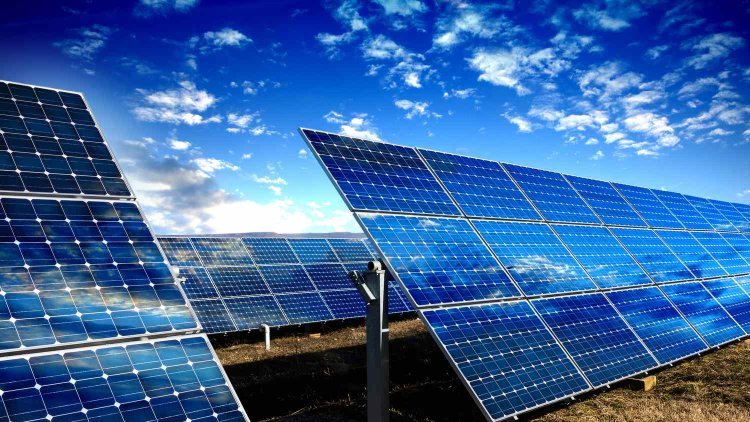Emerging Technologies in Green Energy: What's Next for India?
Emerging Technologies in Green Energy: What's Next for India?

India is undergoing a green energy revolution, driven by technological advancements, government initiatives, and growing awareness about environmental sustainability. As the country strives to achieve its ambitious renewable energy targets, the integration of emerging technologies is reshaping the green energy landscape. These innovations promise to enhance energy efficiency, storage, and distribution, making green energy more accessible and reliable.
1. Advanced Solar Panel Technologies
Solar energy remains one of the most promising sources of renewable power in India. Recent advancements are making solar power generation more efficient and cost-effective.
Emerging Innovations:
- Bifacial Solar Panels: Generate power from both sides, increasing energy output.
- Perovskite Solar Cells: Offer higher efficiency at lower production costs.
- Building-Integrated Photovoltaics (BIPV): Incorporate solar cells directly into building materials, such as windows and facades.
Impact:
These advancements can significantly boost the capacity of solar installations and reduce the dependency on conventional power sources.
Example: Leading companies like Om Solar Solution and other solar company in Kanpur are already adopting advanced solar technologies to meet the rising demand for green energy solutions.
2. Green Hydrogen Technology
Green hydrogen is emerging as a game-changer for industries such as transportation, manufacturing, and power generation.
Why Green Hydrogen?
- Produced using renewable energy sources like solar and wind
- Zero carbon emissions
- Ideal for energy storage and long-haul transportation
India's Initiatives:
The National Hydrogen Energy Mission aims to position India as a global leader in green hydrogen production and export.
3. Energy Storage Systems (ESS)
Efficient energy storage is critical for the widespread adoption of renewable energy.
Emerging Technologies:
- Solid-State Batteries: Higher energy density and longer lifespan compared to traditional lithium-ion batteries.
- Flow Batteries: Ideal for large-scale energy storage with the ability to scale capacity.
- Battery Recycling Technologies: Ensuring sustainable battery production and disposal.
Impact:
These advancements will address the intermittency of solar and wind energy, ensuring a stable power supply.
4. Artificial Intelligence and Smart Grids
AI-powered smart grids are transforming energy distribution and management.
How AI is Revolutionizing Green Energy:
- Predicting energy demand patterns for optimal distribution
- Enhancing grid stability by integrating various energy sources
- Real-time monitoring and fault detection
Impact:
Smart grids enable better energy management, reducing wastage and improving reliability.
5. Floating Solar Farms
India's abundant water bodies present an untapped opportunity for floating solar farms.
Advantages:
- Efficient land use
- Reduced water evaporation from reservoirs
- Enhanced cooling, leading to higher energy generation
Ongoing Projects:
Several states, including Maharashtra and Kerala, are developing floating solar farms to augment their renewable energy capacity.
6. Waste-to-Energy Technologies
With growing concerns about waste management, converting waste into energy is gaining traction.
Emerging Innovations:
- Plasma Gasification: Converts waste into clean syngas for power generation.
- Anaerobic Digestion: Produces biogas from organic waste.
Impact:
These technologies help address urban waste issues while generating clean energy.
7. Carbon Capture, Utilization, and Storage (CCUS)
CCUS technologies capture carbon emissions from industrial processes and store or repurpose them.
Why CCUS Matters:
- Mitigates greenhouse gas emissions
- Supports India's goal of achieving net-zero emissions by 2070
Applications:
Industries can use captured carbon to produce synthetic fuels, building materials, and other products.
8. Wind Energy Innovations
The wind energy sector is seeing advancements that enhance efficiency and reduce costs.
Emerging Technologies:
- Vertical Axis Wind Turbines: Ideal for urban environments with space constraints.
- Offshore Wind Farms: Harnessing stronger and more consistent winds at sea.
Impact:
These innovations will complement solar energy, creating a balanced renewable energy mix.
Conclusion: A Green Energy Future for India
India's journey toward a sustainable energy future is driven by the rapid adoption of emerging technologies. From advanced solar panels and green hydrogen to AI-powered smart grids and waste-to-energy solutions, these innovations are reshaping the energy landscape.
As industries and consumers increasingly embrace green energy, collaboration between the government, private sector, and research institutions will be essential. By staying at the forefront of technological advancements, India can achieve its renewable energy goals and set an example for the world.
The future of energy in India is green, smart, and sustainable—powered by innovation and determination.
What's Your Reaction?











